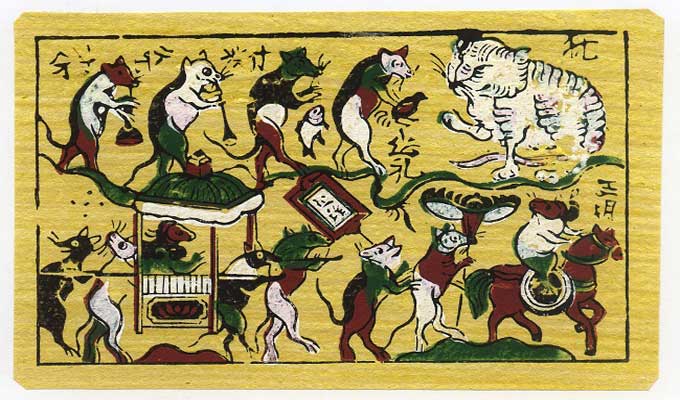Dong Ho folk paintings are printed from woodblocks and created by Dong Ho villagers in Bac Ninh province.

Each picture sends a philosophic message about morality, ethics, and religious beliefs.
Dong Ho folk paintings were first created in the 17th century in Dong Ho village, Bac Ninh province.
This kind of paintings has strong vitality and special attraction to Vietnamese and foreign viewers for its simplicity and animated reflection of real life and of people dreaming of a better, happier life.
Nguyen Dang Che, one of a few veteran artisans who are still engaged in making Dong Ho paintings, said, “The picture “The Mouse’s Wedding” is the most popular. Now Dong Ho paintings include the topic about Quan Ho folk singing."
"Previous topics such as “returning home to pay gratitude to ancestors after achieving academic honours” are still relevant today. We think about how to reflect reality into our art works,” he added.
Dong Ho paintings are unique in their color and printing paper. The paper made from the bark of Do tree is thin, soft, spongy, and absorbent and coated with Ho Diep, a special kind of coating, to create shiningness.
Ho Diep is a mixture of ground oyster shells and steamed rice powder liquid.
Vu Thi Dung, daughter in law of artisan Nguyen Dang Che, said, "After being coated with Ho Diep, the Do papers will turn white and will be dried under sunlight for a while. The drying papers will be damaged if there are winds. The coated papers can be lumpy, so they need to be scraped and polished.”
It’s not easy to paint Ho Diep onto the Do paper. Pine leaf brushes are best to use, creating beautiful material for Dong Ho artwork.
Dong Ho villager Nguyen Thi Oanh said, “We use degenerating oyster shells, which will easier for grinding. Oysters are caught from the sea.”
Dong Ho paintings’ colors made from natural materials are unique.